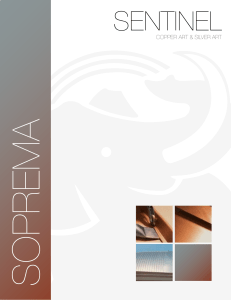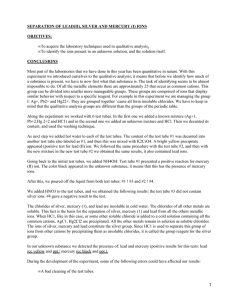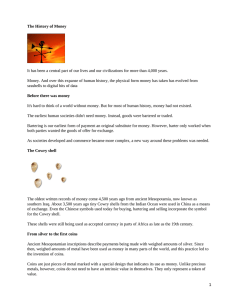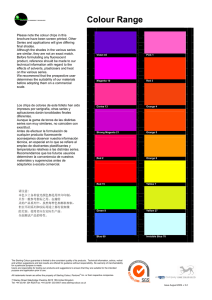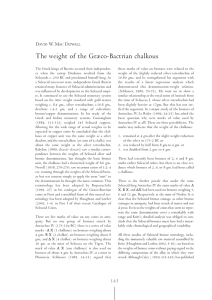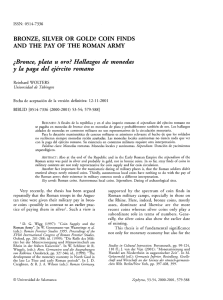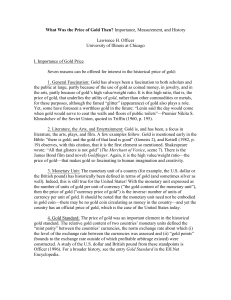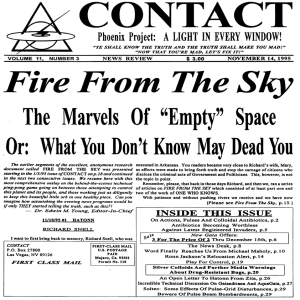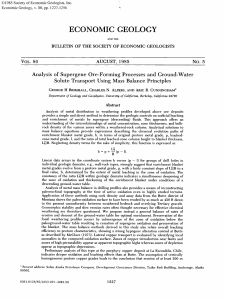Olympic Medals
Anuncio
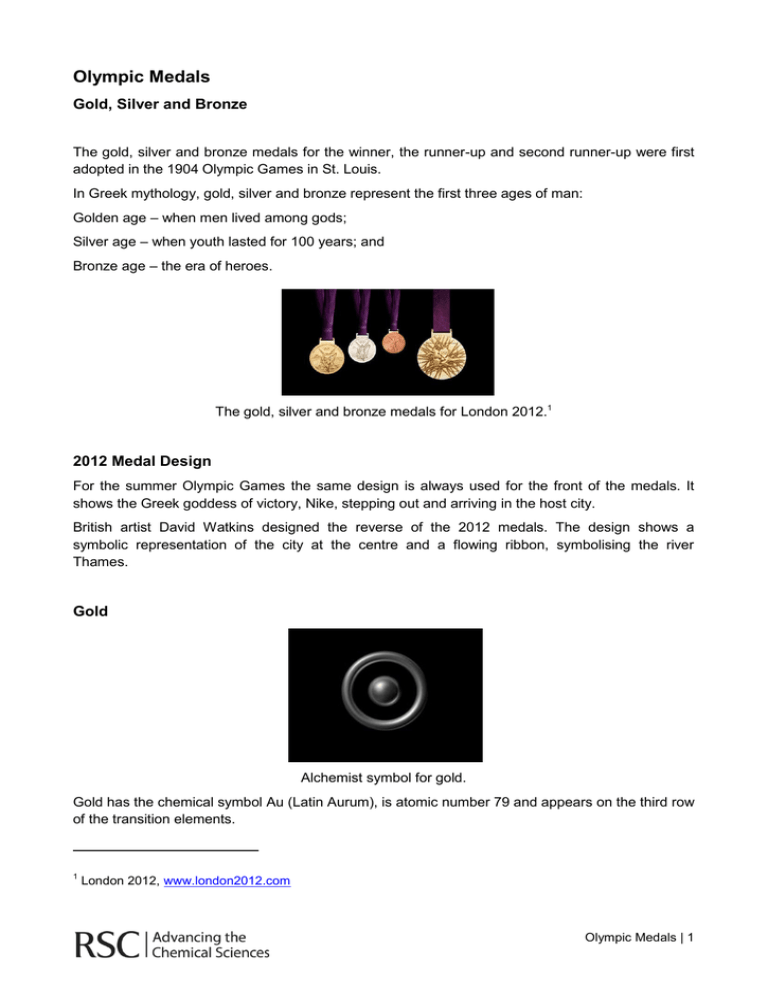
Olympic Medals Gold, Silver and Bronze The gold, silver and bronze medals for the winner, the runner-up and second runner-up were first adopted in the 1904 Olympic Games in St. Louis. In Greek mythology, gold, silver and bronze represent the first three ages of man: Golden age – when men lived among gods; Silver age – when youth lasted for 100 years; and Bronze age – the era of heroes. The gold, silver and bronze medals for London 2012.1 2012 Medal Design For the summer Olympic Games the same design is always used for the front of the medals. It shows the Greek goddess of victory, Nike, stepping out and arriving in the host city. British artist David Watkins designed the reverse of the 2012 medals. The design shows a symbolic representation of the city at the centre and a flowing ribbon, symbolising the river Thames. Gold Alchemist symbol for gold. Gold has the chemical symbol Au (Latin Aurum), is atomic number 79 and appears on the third row of the transition elements. 1 London 2012, www.london2012.com Olympic Medals | 1 Gold is probably the earliest known metal and the ancient alchemist symbol consisting of a circle with a sphere in the middle represents the sun. Gold is one of the least reactive solid chemical elements and is found therefore in elemental form as nuggets or grains. Gold has been treasured as a precious metal for coins, jewellery and other arts since before recorded history. Gold is a dense, soft, shiny, malleable and ductile metal. It can be hammered into very thin sheets of gold leaf. These are used for gilding of books or illuminations (decorations in books) or even as cake decorations. Elemental gold has no taste and is non-toxic. Gold does not dissolve in single, concentrated acids. Gold can withstand the ‘acid test’ with concentrated nitric acid. If a drop of nitric acid is placed on a piece of golden coloured metal and there is a visible chemical reaction like fizzing or colour change, the metal is not gold. Gold only dissolves in a freshly prepared mixture of hydrochloric acid and nitric acid in a 1:3 ratio. This mixture is called aqua regia, the royal water. Gold has a density of 19.3 g cm−3; it is approximately 19 times denser than water. By comparison, lead has a density of 11.3 g cm−3, only about half the density of gold. Gold has an unusual colour for a metal. Most pure metals have a shiny silvery colour. The colour of metals is related to visible light. Coloured substances absorb part of the visible spectrum. We see the colours that are not absorbed or reflected. When certain wavelengths of light are absorbed, electrons are raised to a higher energy level. This can happen when the gap between different energy levels is small. In Gold atoms, there is overlap between the 5d orbitals and the 6s orbital. The energy needed to raise an electron from 5d to 6s is equivalent to blue light which is absorbed. All other colours are reflected. These reflected colours combined give the typical ‘golden colour’. In silver, the energy gap between 4d and 5s is equivalent to ultraviolet light, so all visible light is reflected giving an almost white colour. Silver Alchemist symbols for silver. Silver has the chemical symbol Ag (Latin: argentum), is atomic number 47 and appears on the second row of the transition elements. The ancient alchemist symbol for silver is associated with the moon. Silver is sometimes found in elemental form. Most silver is now produced as a by-product of copper and lead production, because the ores occur often together. Silver has the highest electrical and thermal conductivity of all metals. It reflects all visible light and appears silvery white. Silver is a fairly unreactive metal. In contrast to gold, it dissolves in concentrated nitric acid. It does not react with pure oxygen but does tarnish in air containing traces Olympic Medals | 2 of ozone or hydrogen sulphide. The coating of silver sulphide can be removed easily with dilute acid. Silver has antiseptic properties. Silver compounds are sensitive to light and are used in black and white photographic films. Silver has been highly sought after for making coins, jewellery and table ware since the antiquity. Bronze Alchemist symbol for copper. Alchemist symbol for tin. Bronze is an alloy of copper and tin and consists of about 90% copper and 10% tin. It is harder and stronger than copper on its own. Copper and tin ores rarely occur together, so making bronze has always involved trade. Bronze gets coated in a surface layer of copper oxide. This protects the metal underneath from corrosion. As a mixture of two metals, bronze has a lower melting point than copper. It is easier to melt and cast than a pure metal. Bronze is particularly resistant to corrosion by salt water. It is still used for making ship’s propellers. Bronze has excellent resonant properties and it is used as bell metal to make church bells. Bronze is used for casting artefacts, from small intricate works of art to large statues. Olympic Medals | 3
